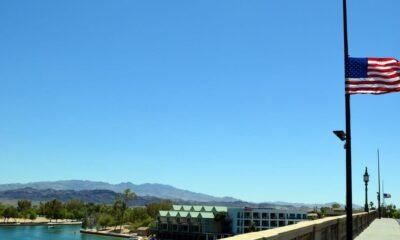firearms
Ancient Firearm Unearthed in Arizona: North America’s Oldest Find

By Matthew Holloway |
A remarkable archaeological discovery was documented in a study published in the International Journal of Historical Archaeology, revealing what is considered “the oldest firearm ever found within the continental USA, and perhaps the oldest cannon currently known on the continent.”
Unearthed in the Santa Cruz Valley of southern Arizona, this bronze wall gun is dated to the Coronado expedition between 1539 and 1542. Measuring 42 inches in length with a bore diameter of approximately .95 inches, the cannon weighs about forty pounds. Its specifications resemble a 5-gauge shotgun, similar to those used for breaching 16th-century fortifications.
The cannon was discovered in an undisturbed state at the site of a heavily eroded adobe-and-rock-walled building, having remained hidden for roughly 480 years. Although the exact date of its manufacture remains uncertain, its contextual usage aligns with the year 1541.
Independent journalist Mario Nawfal highlighted the significance of the find via X, noting that the cannon was located at San Geronimo III, a Spanish settlement founded during Francisco Vázquez de Coronado’s expedition in pursuit of the legendary “Seven Cities of Gold.” Nawfal emphasized that this cannon symbolizes resistance, marking one of the earliest Native American victories against Spanish colonization, specifically noting the surprise attack by the Sobaipuri O’odham that dismantled Spain’s presence in the Southwest.
In their study, authors Deni J. Seymour and William P. Mapoles remarked on the cannon’s historical relevance, stating, “It is a design consistent with the mid-to-late 1400s and was practically obsolete by the time of the expedition. This cast bronze cannon is a pristine historical specimen found in situ.” They elaborated on its practicality for expeditions, indicating its lightweight nature made it ideal for transport. “The expedition brought artillery pieces to breach wooden or light adobe walls and defend against enemies,” the authors explained.
The versatility of this firearm was particularly advantageous for long journeys. The powder charge could be adjusted according to the target, influencing recoil and firing methods. This functionality allowed it to be effectively used in various situations, whether mounted, positioned over walls, or supported by a tripod.
According to reports, the cannon’s immaculate condition suggests it may have been left behind by retreating Spanish forces during the Sobaipuri O’odham attack on the settlement. The absence of ammunition in the cannon, along with nearby clusters of lead shot and Sobaipuri arrowheads, supports this theory.
Matthew Holloway is a reporter for AZ Free News. Follow him on X for his latest stories, or email tips to Matthew@azfreenews.com.
















